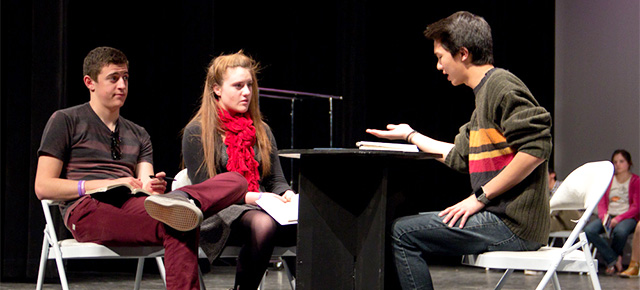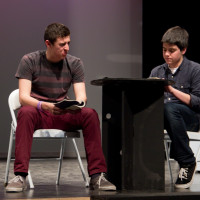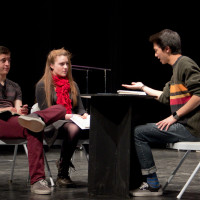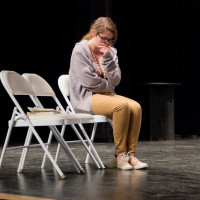
This March, Aragon students will put on a production of “The Laramie Project,” a play that follows the community reaction to the 1998 murder of Matthew Shepard, a gay student at the University of Wyoming in the town of Laramie. The story of Matthew Shepard has since grown from a tragic news event into a rallying cry for those in the movement of fighting hate crimes—or violent crimes directed at a person due to actual or perceived membership in a certain group, such as sexual orientation, race and gender identity.
The production follows a group of filmmakers from the Tectonic Theatre Project, a New York-based theater company, as they interview various community members and try to understand more about the recent death and its causes.
Says director Shane Smuin, “I love the fact that [The Laramie Project] takes theater and really changes the way it is presented, meaning, first of all, none of it is fiction; it’s all real people. It’s all their words, and it’s around a real event. So it’s the closest thing you could possibly get to a documentary on stage.”
Senior Jared Dilibero agrees, “Something great about this play [is that] instead of a person sitting down and writing a script and making up characters, these people are real; these are the words they have said. And with that, you have descriptions of Matthew Shepard and you get glimpses of his life. It’s a beautiful thing because you have this horrible accident but you get to see this great character of this person.”
The costumes worn by the actors will be very minimalistic, only consisting of a few pieces to ornament an all-black outfit. Explains sophomore Savanna Cyr, “Usually clothing and appearance can show who a person is. Especially at school, you can look at a person and their clothes and see who they are. But with [this play], there are little set pieces so you can really look behind the clothes and see the character itself through the emotion and their actions and how they portray this character. You’re focused more on the actor than being distracted by the clothing.”
Adds senior Eli Mayerson, “The concept of the play is that it is set in blank performance space and it’s purely the actors that bring the show to life.”
In an unusual change, all cast members will be on-stage and visible to the audience at all times, even during scenic and costume changes. Remarks Smuin, “It’s sort of like taking the mask off of theater and exposing it in its rawest form.”
Despite the horrifying event the play is based on, it still manages to feature an element of positivity. Says freshman Nathan Tolfa, who plays Aaron Kreifels in the play, “[Aaron] was the boy who found the body of Matthew Shepard. He just feels very bad that he wasn’t able to save him.” He continues, “He doesn’t really think of things as gay or straight; he’s just about how it’s a boy that died out in Laramie.”
Adds Tolfa, “A lot of people that I have heard have been talking about how it was a sad and tragic play, and while that’s true, it’s also very hopeful in talking about what good can come from something as terrible as what happened to Matthew Shepard.”
Smuin agrees, “There is a character named Doc O’Connor. He is a limo driver in Wyoming who took Matthew Shepard to gay bars in Fort Collins, Colorado, so he knew him. And he got the impression from [him] that he was a positive-thinking kind of person and an honest, sincere kind of guy, and that even though he was brutally beaten to death—the outcome of this crime —he would want to have positive change come out of it,” explains Smuin, noting this change is “recognition that it was a hate crime and recognition that they must be put through the justice system.”
Mayerson concludes, “Statistics show that annually there are twenty killings solely due to the fact that the victims were LGBT. Last year the number was twice that. Hate crimes of all natures are a serious problem in our country and ‘Laramie Project’ is a great way to combat that. By presenting a broad range of real reactions to a serious hate crime, the audience gets a full picture, and education is a primary component of activism. When more people recognize the problem, more people want a solution and policy changes.”



